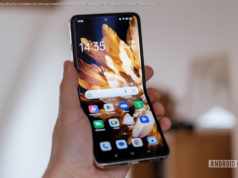The Snapdragon 675 features numerous enhancements and features targeted towards mobile gaming.
Qualcomm has just unveiled the Snapdragon 675, its latest high-end mobile computing platform. The highlights of the chip include vastly optimised gaming and AI performance as well as a host of tweaks to image processing, i.e. the camera. In fact, the new platform now natively supports triple camera setups (wide, ultra-wide, tele, etc.).
The new chip is the first one to incorporate Qualcomm’s semi-custom 4 th generation Kryo 460 cores. Essentially, these are ARM Cortex A76 and A55 cores that are customised to suit Qualcomm’s chipset architecture. As usual, the new platform employs the big. LITTLE architecture where high-performance cores are paired with energy-efficient cores. In this case, we see two A76-based high-performance cores and six A55-based energy-efficient cores. Interestingly, the chip is built on an 11 nm process, which we haven’t seen before. As Qualcomm explained on a call, the company has to balance demand for billions of chips. It’s not commercially viable to have each and every one of them built on the very best process node or technology available.
Mobile gaming is taking over the world. Image: tech2/Anirudh Regidi
The launch of the SD675 is a little odd given that the SD670 was announced just a few months ago. From what we’ve learned, the 675 is, overall, better than the SD670, and especially so in the gaming department.
Gaming
We haven’t seen the previous generation Snapdragon 660 platform on many phones in India, with the most notable device being the Nokia 7 Plus, and we’ve seen nothing of Snapdragon 710 platform.
An overview of the upcoming Qualcomm Snapdragon 675 platform
The SD660-based Nokia 7 Plus, however, did impress us with its performance, especially in gaming. As Sheldon Pinto noted in his review, the phone barely heated up when playing games. The relatively demanding and ever-popular PUBG was the only phone that pushed the phone, and by extension the chipset, hard, and even in that case, gaming performance at max settings was unhindered.
The SD675 intends to better the 660 with further optimisations to gaming performance, most notably in PUBG, as well as introduce better optimisations for everyday tasks. In effect, Qualcomm is promising faster load times app load times (15-30 percent) and a much faster browsing experience (35 percent).
Optimisations for the most popular game engines means that other games will also benefit from the SD675
The biggest update to gaming that Quaclomm is promising is “90 percent fewer janks.” When it comes to gaming, frame-time is a more important metric than frame-rate. While frame-rate is a measure of the number of frames per second that are rendered, frame-time refers to the time it takes to render each frame. In competitive games, frame-time is critical. Bad frame-time is seen as stuttering in games, and it’s these instances of stutter that Qualcomm claims to have reduced.
Qualcomm has done this by optimising its chipset with better support for game engines (Unity, Unreal Engine 4, etc.) and specific optimisations for certain games, including PUBG, QQ Car Racing, Cross Fire Mobile and so on.
Display resolutions of up to FHD+ are supported.
Camera
Another major upgrade is seen in the camera department. The new features, and there are a lot of them, are powered by Qualcomm’s Spectra ISP (Image Signal Processor). New features include optimisations for 4K video capture, high-resolution depth-sensing, bokeh, HDR, 3D face unlock, multi-cam support, etc. These are features that are available on previous and competitor platforms as well, but the major difference is that the chip is now better optimised to handle such content.
Triple camera setups are now natively supported.
The biggest highlight could very well be “limitless slo-mo”, which would allow users to record extended 720p videos at an incredible 480p. Such videos were earlier limited to bursts of a second or less. Another important feature is zero shutter lag for certain types of cameras (single 25 MP or dual 16 MP).
AI
AI updates are usually hard to quantify. You’ll experience “faster AI” as more responsive voice inputs, real-time style-transfer, enhanced security, and so on. On the iPhone XS, for example, Face Unlock is faster only because of advances in AI processing.
Improved AI support directly translates to a better user experience.
With the SD675, Qualcomm claims 50 percent better AI performance, 3x faster secure unlock, improved payment security, better support for multiple voice assistants (via Qualcomm Aqstic Voice UI), and so on.
Qualcomm’s Aqstic and aptX audio technologies are, of course, fully supported.
Network and battery life
Snapdragon 675 supports Qualcomm’s X12 LTE modem (600 Mbps) for connectivity and Quick Charge 4+ for the battery. The latter will apparently let you go from 0-50 percent in 15 minutes.
Battery life improvements aside, Quick Charge 4+ means that the phone can go from 0-50% charge in just 15 minutes
The new platform is expected to ship in Q1 2019. Hopefully, we’ll be seeing Snapdragon 675-powered devices at MWC next year.






